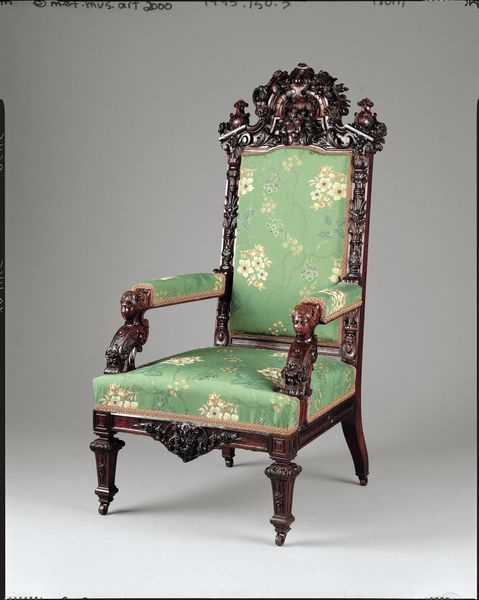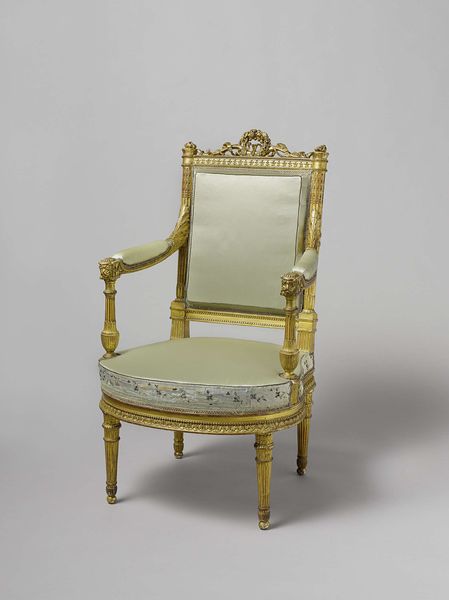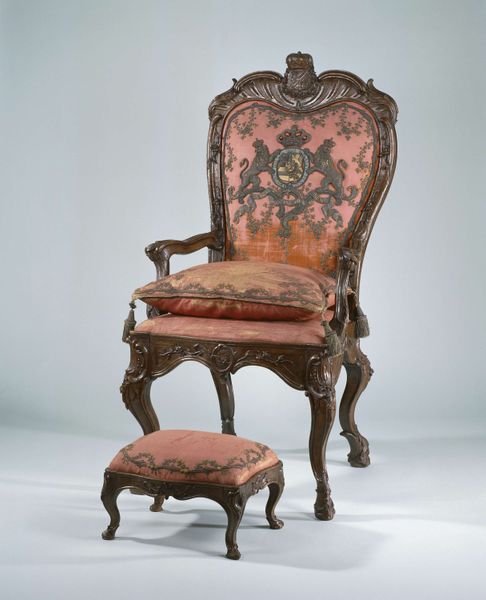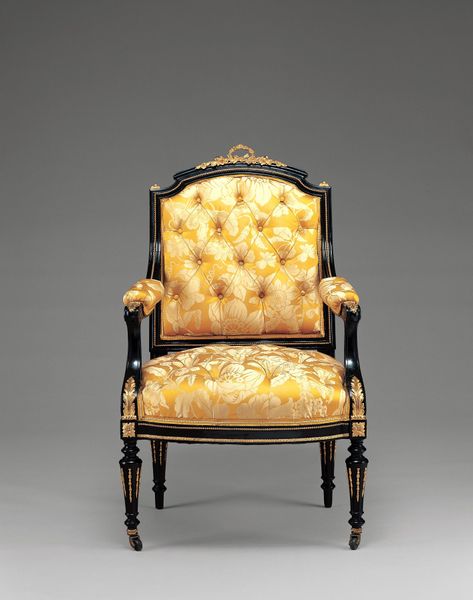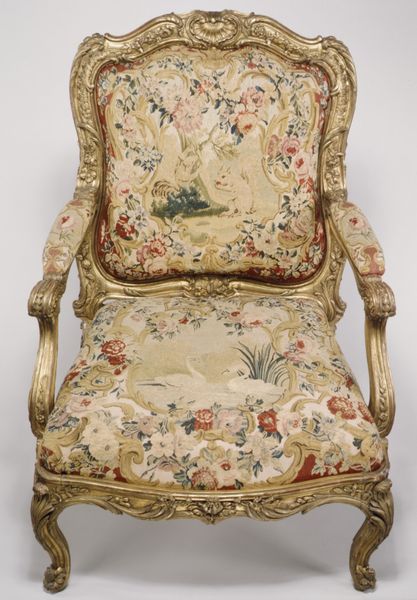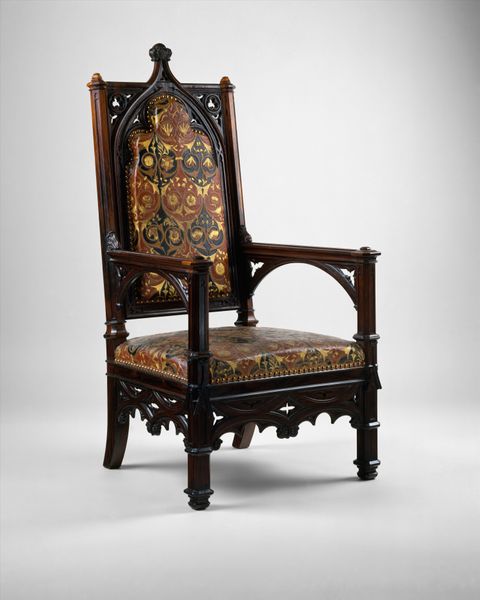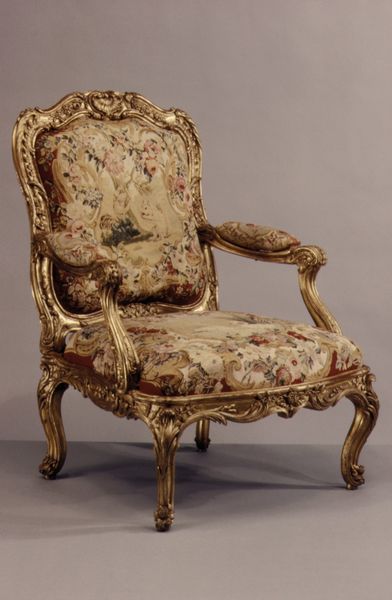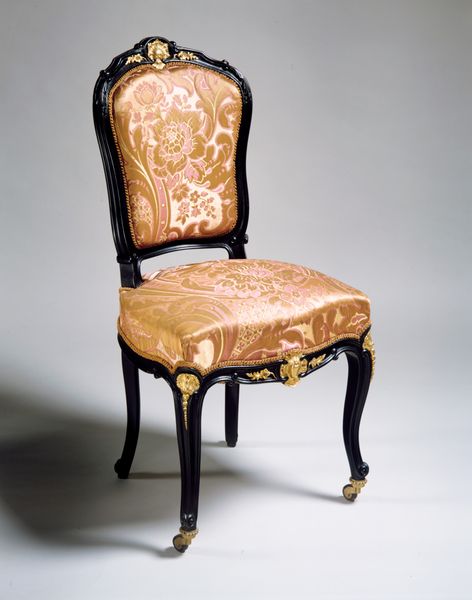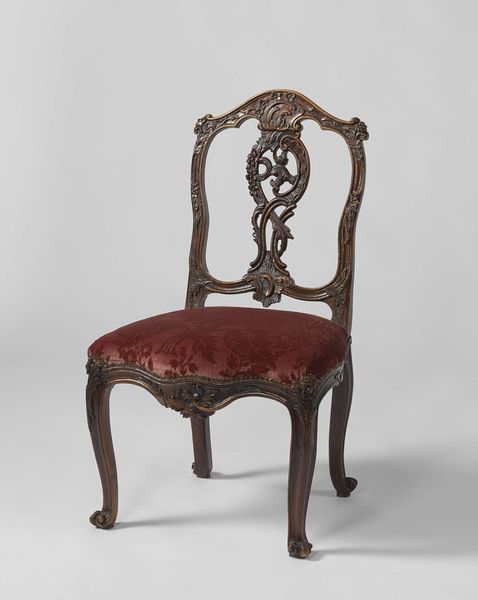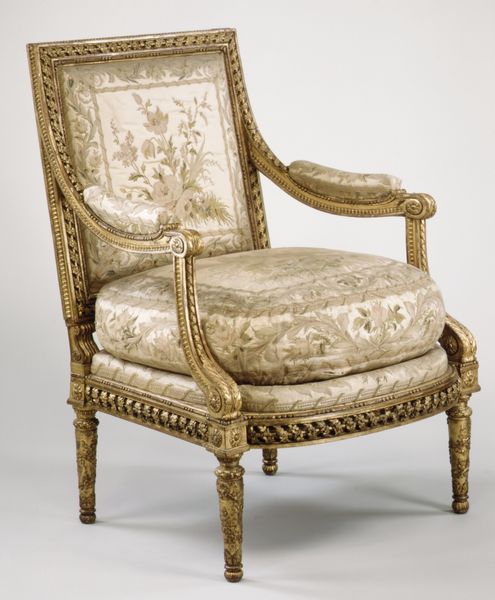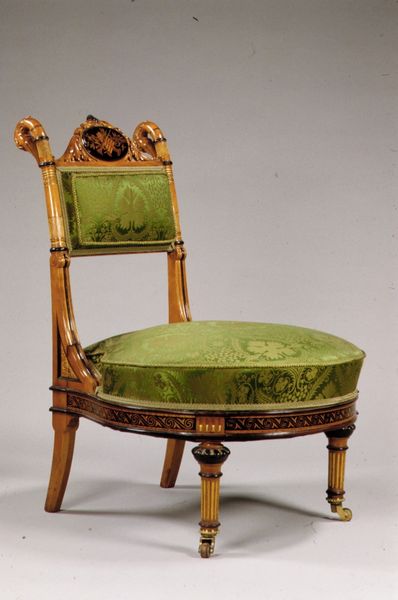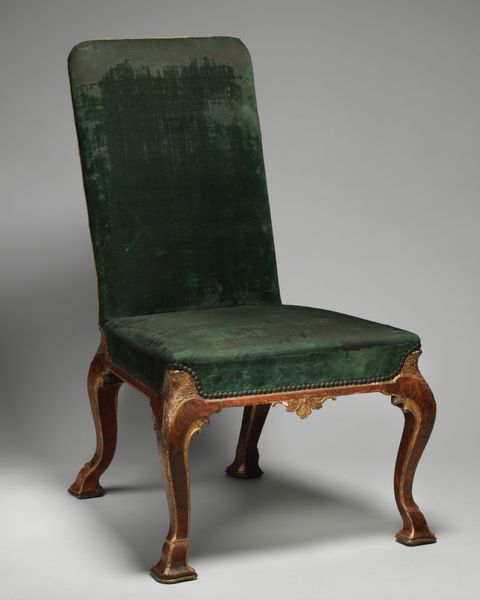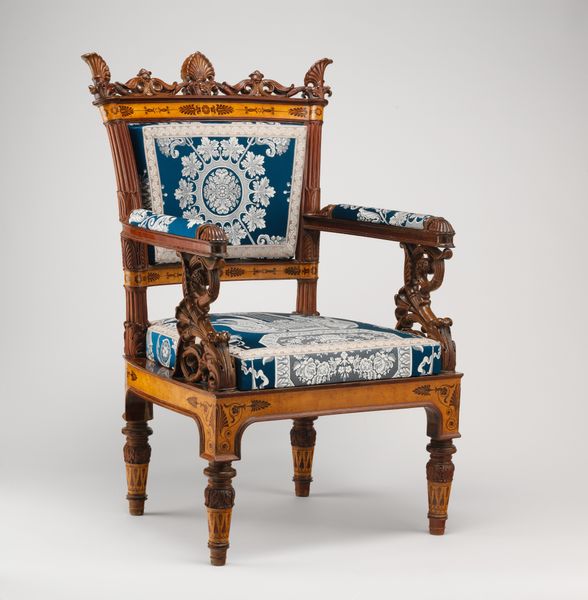
carving, textile, sculpture, wood
#
carving
#
baroque
#
sculpture
#
furniture
#
textile
#
sculpture
#
ceramic
#
wood
#
decorative-art
Dimensions: height 180.0 cm, width 95.0 cm, depth 87.0 cm, height 56.5 cm, width 74.0 cm, depth 59.0 cm
Copyright: Rijks Museum: Open Domain
Curator: This is the Stadtholder's chair, made around 1747. Look at the intricate carving, the textile... all meticulously crafted. What strikes you first? Editor: It's the opulence, definitely. All that carved wood, and then the textile cushion with what looks like an embroidered crest... How would you interpret the level of craft on display here? Curator: The Stadtholder’s chair isn't just furniture; it's a statement about production and consumption. Think about the labor involved in sourcing the wood, the carving, the weaving of the textile, the embroidery… who produced each element, and for whom? The value wasn't just in the finished object, but also in the conspicuous display of resources and manpower. Editor: So you're saying the materials and the process are the key to understanding the chair's purpose? Like a symbol of wealth as material excess? Curator: Precisely. The Stadtholder’s chair challenges any simple divide between high art and craft, revealing the social dynamics embedded in artistic production. Consider what each material choice might mean. Why this particular wood, or that shade of textile? Editor: Right, and understanding that process allows us to grasp its meaning within society. The textiles soften what otherwise could feel rigid and authoritarian. It makes me wonder about the skills of the people involved in creating a chair like this. Curator: Exactly! We can appreciate the craftsmanship involved, while understanding how material objects reflect broader social hierarchies. Now, doesn’t this change your initial understanding of the chair? Editor: Absolutely! Seeing it as a product of a complex system, and considering the unseen labor, definitely gives me a much richer appreciation of the object. Curator: And for me, it highlights how focusing on the means of production offers a deeper understanding than simply admiring the aesthetic result.
Comments
rijksmuseum about 2 years ago
⋮
This chair was used by William IV when he presided over the Court of Justice in the Binnenhof at The Hague. The chairmaker Hutte and the woodcarver Van Dijck chose the most extreme Rococo style for this ceremonial chair. The back is crowned by the arms of Zeeland, Holland and West-Friesland and is embroidered with the stadtholder’s coat of arms.
Join the conversation
Join millions of artists and users on Artera today and experience the ultimate creative platform.
